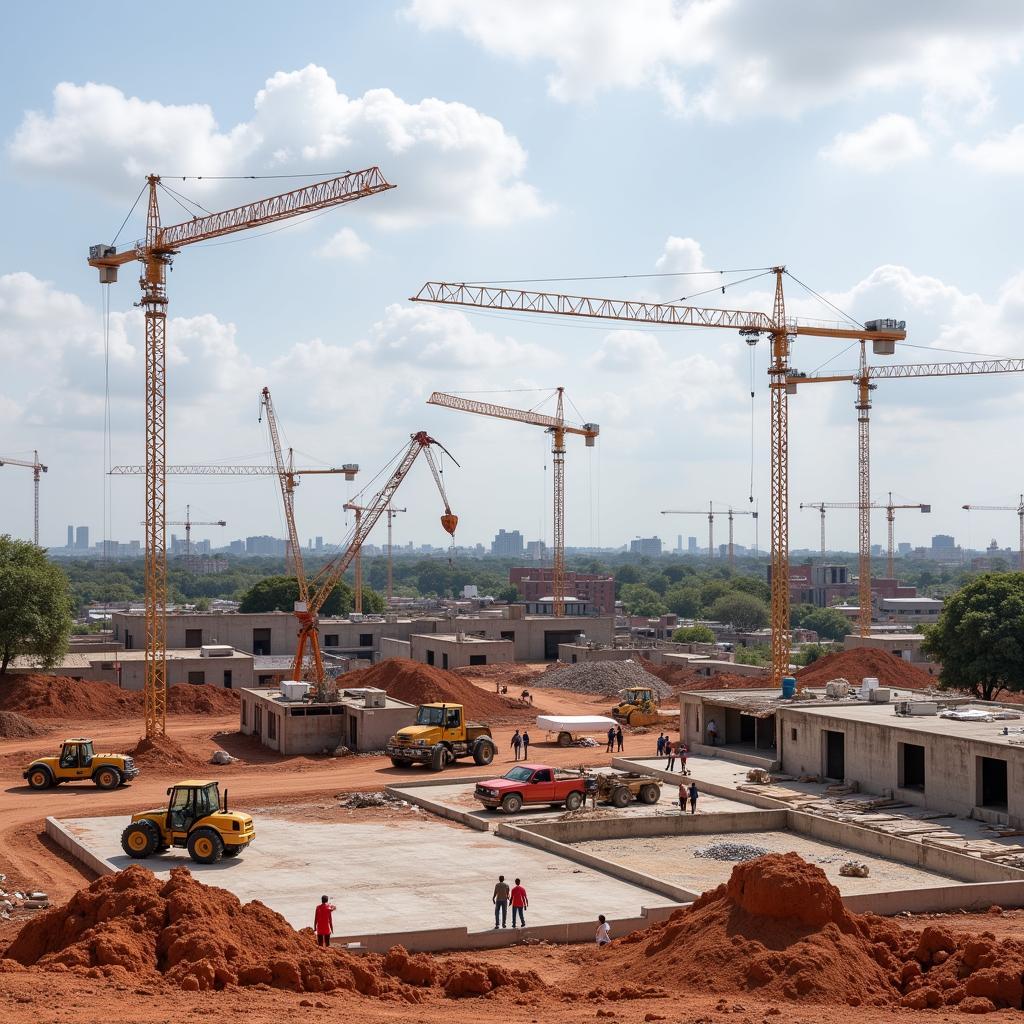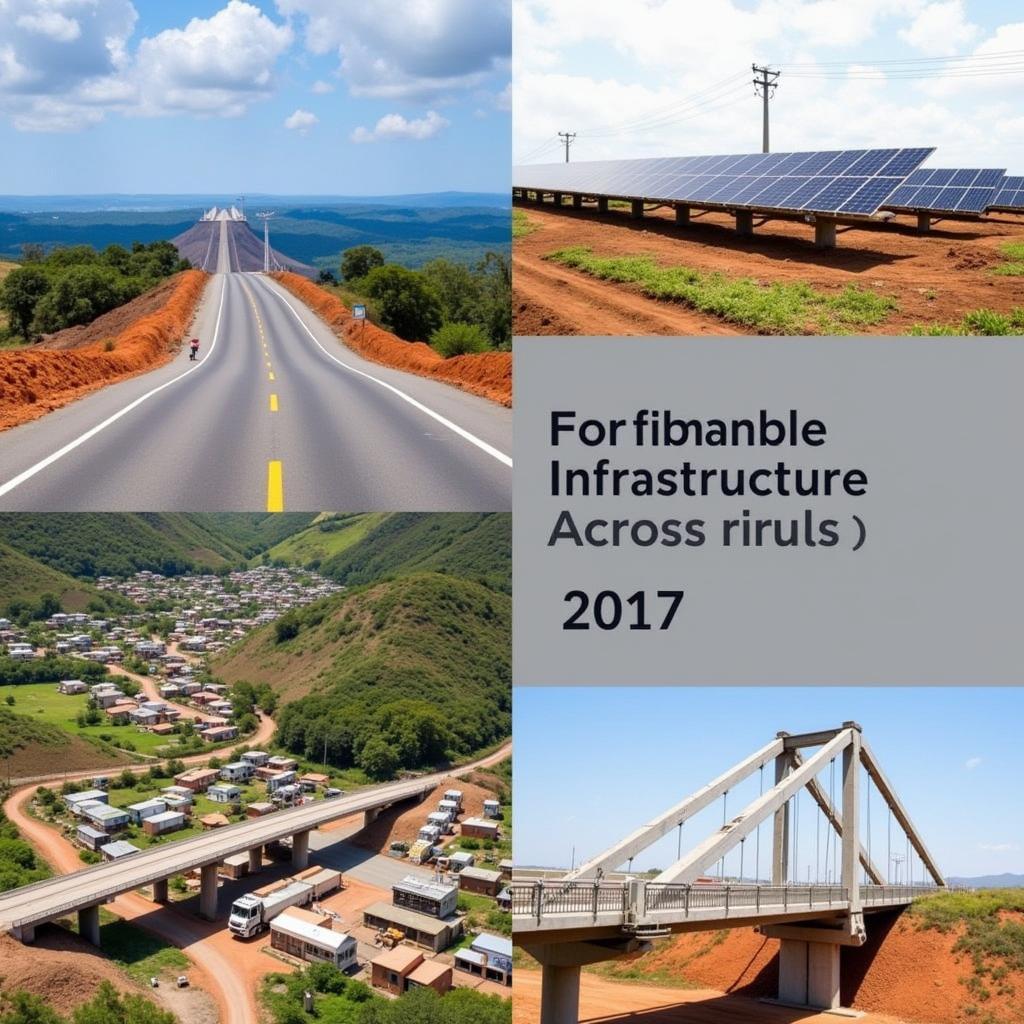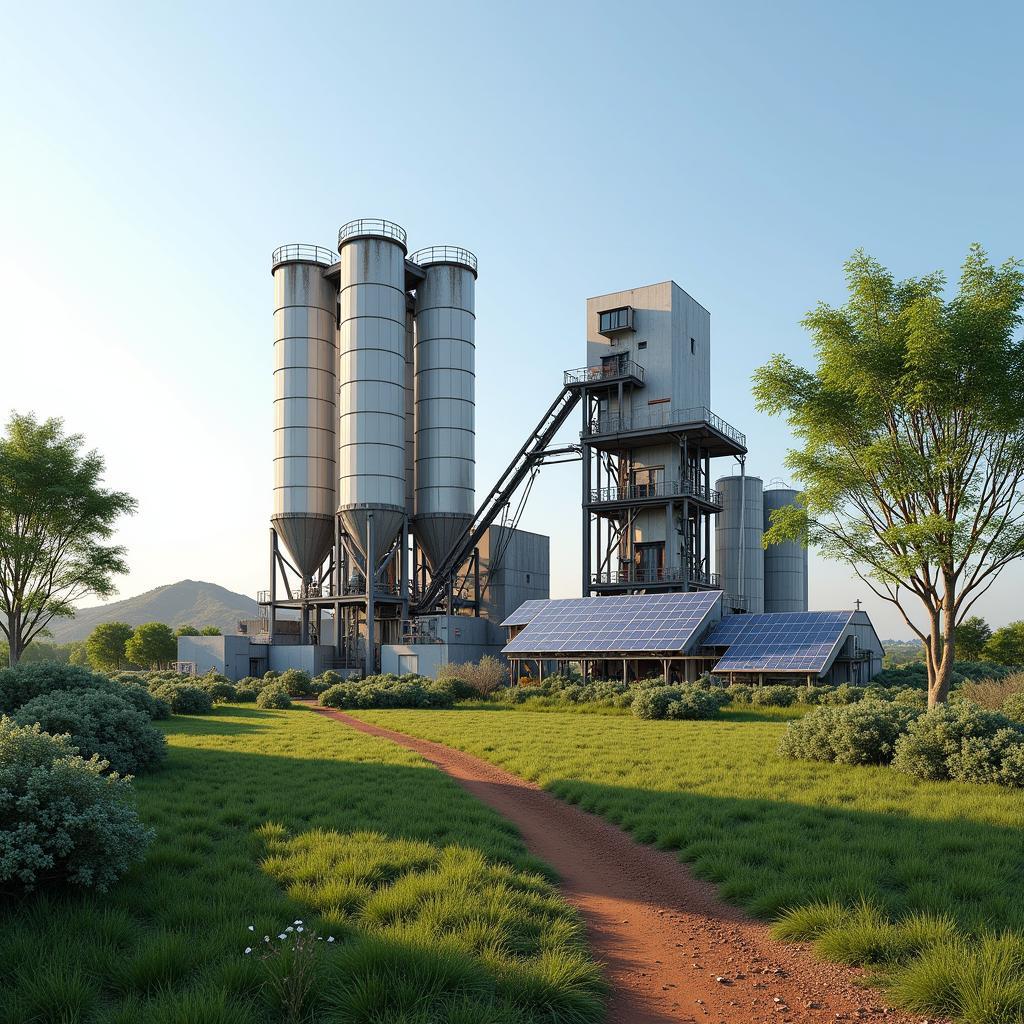A Look Back at the African Cement Industry in 2017
The year 2017 proved to be a pivotal period for the African cement industry, marked by a compelling blend of challenges and opportunities. While demand fluctuated across regions, influenced by factors such as infrastructure investments and economic growth, the industry demonstrated resilience and an unwavering commitment to innovation. Let’s delve into the intricacies that shaped the African cement landscape in 2017.
Navigating Economic Headwinds and Infrastructure Demands
Despite facing global economic uncertainties, the African cement industry in 2017 showcased its adaptability and potential. Construction projects, fueled by a burgeoning population and increasing urbanization, continued to drive demand, albeit at varying paces across different regions.
 East African construction projects in 2017
East African construction projects in 2017
For instance, East Africa, experiencing robust economic growth, witnessed a surge in infrastructure development, leading to a greater need for cement. This region became a focal point for many industry players seeking to capitalize on the expanding construction sector. In contrast, other regions faced more moderate growth, influenced by factors like political instability and fluctuating commodity prices.
Cementing Growth: Key Trends and Drivers
Several key trends characterized the African cement industry in 2017.
1. Rising Investments and Capacity Expansion
Recognizing the immense potential of the African market, both local and international players made significant investments in 2017. These investments focused on capacity expansion, with new cement plants emerging and existing facilities undergoing upgrades to meet the growing demand.
2. Focus on Energy Efficiency and Sustainability
With increasing awareness about environmental concerns, the industry demonstrated a growing commitment to sustainability. Cement manufacturers in Africa actively sought ways to reduce their carbon footprint by adopting energy-efficient technologies and exploring alternative fuels. This shift towards eco-friendly practices highlighted the industry’s dedication to responsible growth.
3. Infrastructure Development as a Key Driver
The push for improved infrastructure across the continent remained a significant driver for the cement industry in 2017. Governments, often in partnership with international organizations, prioritized projects such as roads, bridges, and energy facilities, all of which relied heavily on cement as a primary building material.
 Infrastructure Development across Africa in 2017
Infrastructure Development across Africa in 2017
Challenges on the Horizon
Despite the positive strides, the African cement industry in 2017 also encountered a unique set of challenges.
1. Political and Economic Volatility
Political instability and economic fluctuations in certain regions posed risks to the industry’s growth trajectory. Uncertainty in these areas could impact investor confidence and potentially hinder the progress of construction projects.
2. Infrastructure Gap and Funding Constraints
While infrastructure development remained a key driver, the significant infrastructure gap across Africa presented both a challenge and an opportunity. Securing adequate funding for large-scale projects remained crucial to unlocking the industry’s full potential.
3. Fluctuating Input Costs
Like many industries, the African cement sector grappled with fluctuating input costs, particularly energy prices. These fluctuations could impact production costs and, consequently, the final price of cement, potentially affecting affordability and demand.
Looking Ahead: A Future Built on Innovation
Looking back at 2017 provides valuable insights into the African cement industry’s journey. Despite the inherent challenges, the industry displayed resilience, adaptability, and a forward-looking approach. As Africa continues its path towards development, the cement industry remains poised to play a pivotal role, contributing to the continent’s economic growth and improved quality of life. Innovation, sustainability, and strategic partnerships will be crucial in navigating future opportunities and solidifying the industry’s position as a cornerstone of African progress.
FAQs
1. What were the major drivers of the African cement industry in 2017?
The key drivers in 2017 were increasing infrastructure investments, particularly in East Africa, and a growing focus on affordable housing solutions across the continent.
2. How did political instability impact the industry in certain regions?
Political instability could lead to project delays or cancellations, impacting cement demand.
3. What role did sustainability play in the African cement industry in 2017?
Sustainability gained traction as manufacturers sought to reduce their environmental impact by implementing energy-efficient technologies and exploring alternative fuels.
 Sustainable Cement Production in Africa
Sustainable Cement Production in Africa
4. What were some of the challenges faced by the industry in 2017?
Challenges included political and economic volatility, funding constraints for infrastructure projects, and fluctuating input costs.
5. How did the African cement industry adapt to these challenges in 2017?
The industry responded with a focus on innovation, exploring new technologies, and forming strategic partnerships to navigate the evolving landscape.
6. What does the future hold for the African cement industry?
The future remains promising, driven by urbanization, infrastructure development, and a growing middle class.
7. Where can I find more information about the African economy in 2017?
You can explore more about the African development outlook 2017 for a comprehensive analysis.
Need Assistance?
For inquiries or assistance regarding the African cement industry, feel free to contact us:
Phone: +255768904061
Email: kaka.mag@gmail.com
Address: Mbarali DC Mawindi, Kangaga, Tanzania
Our dedicated customer support team is available 24/7 to assist you.



